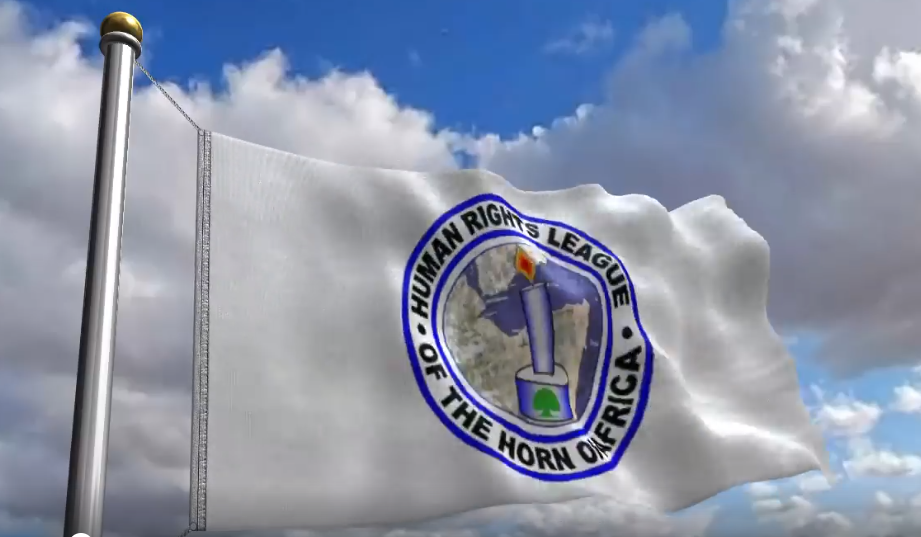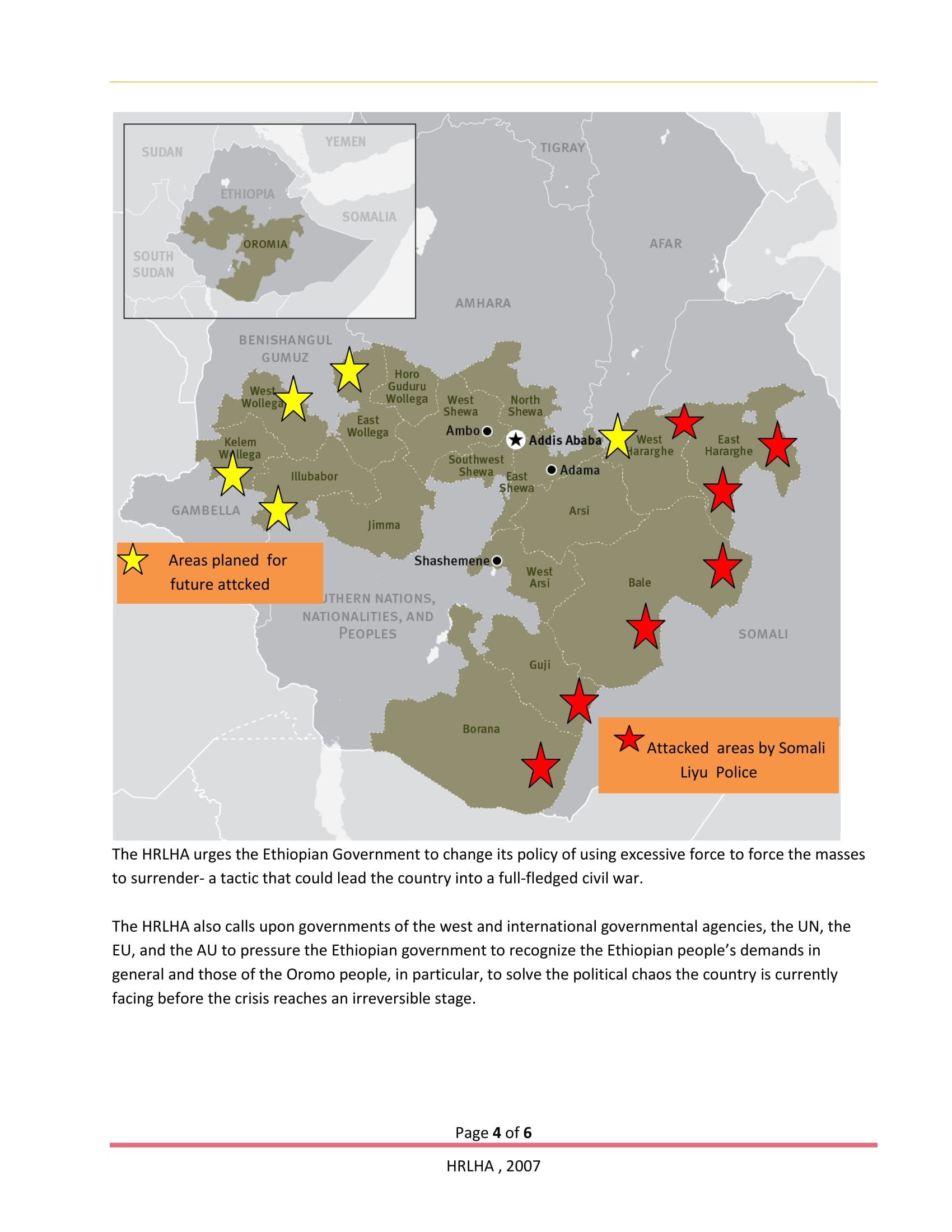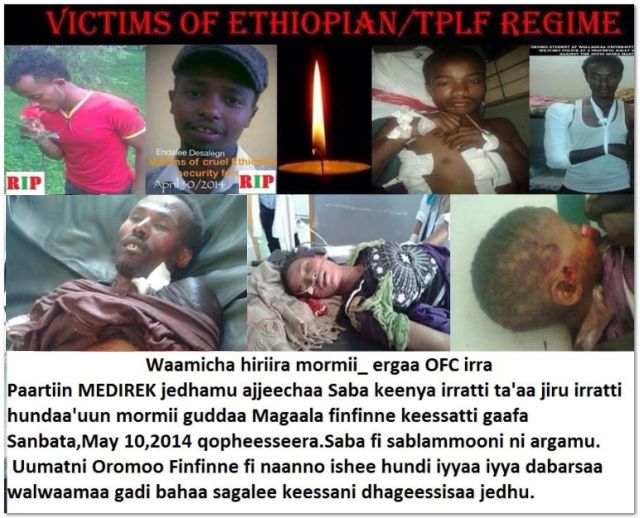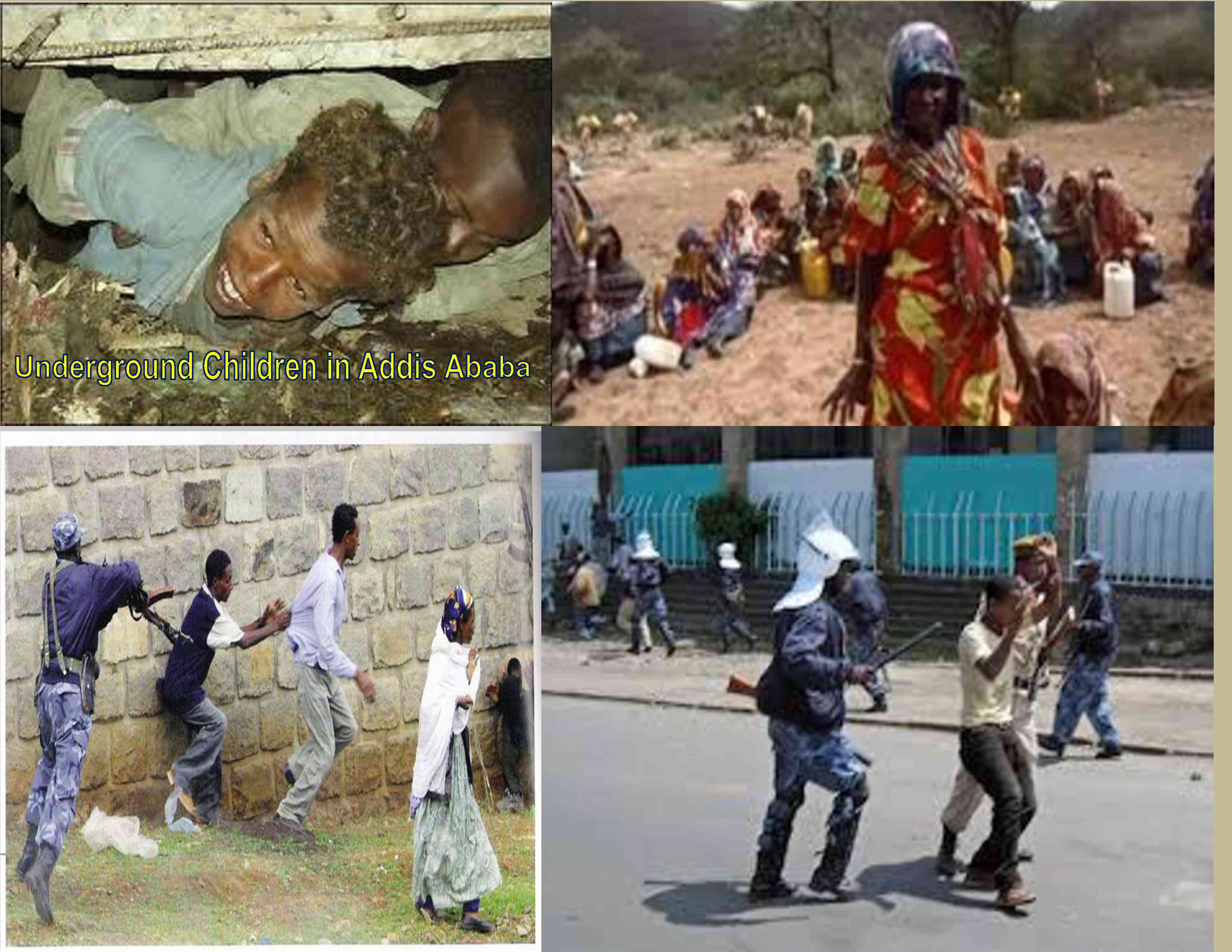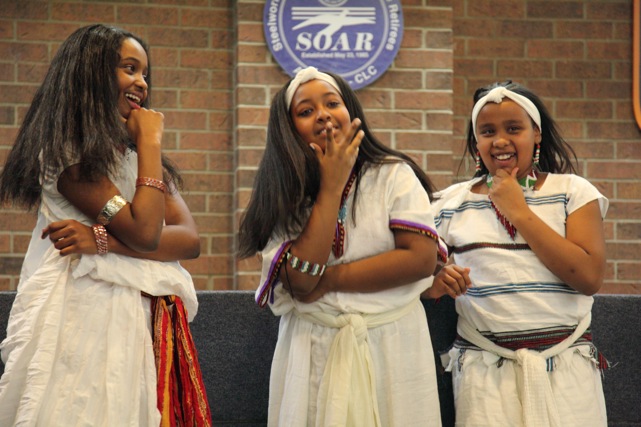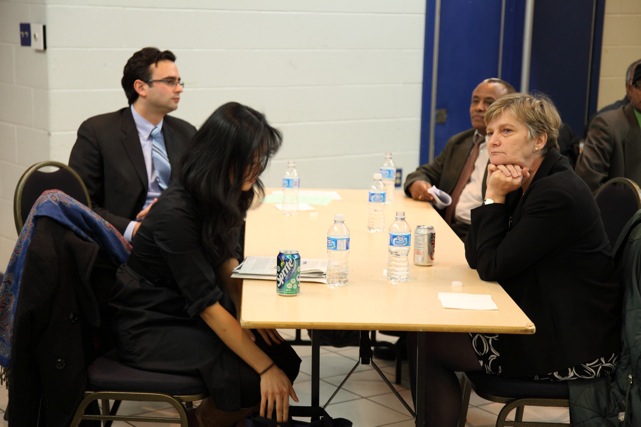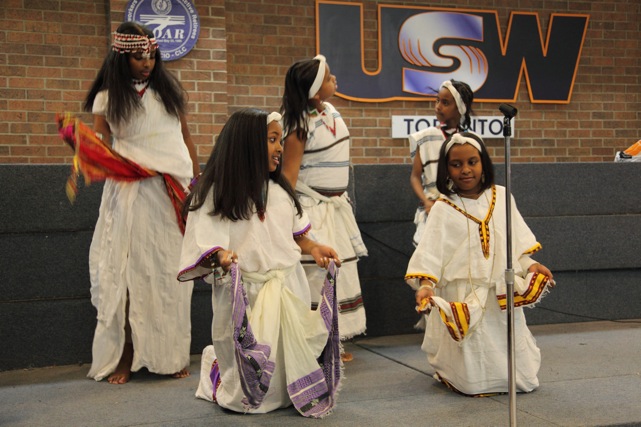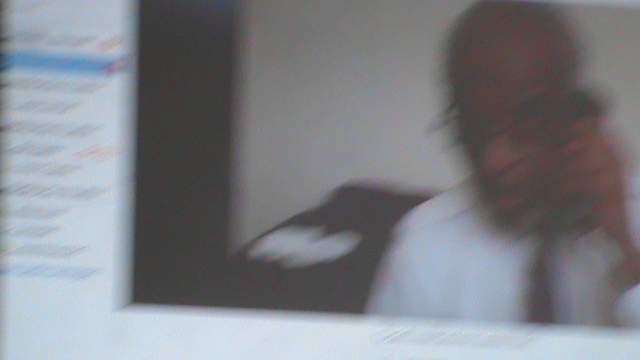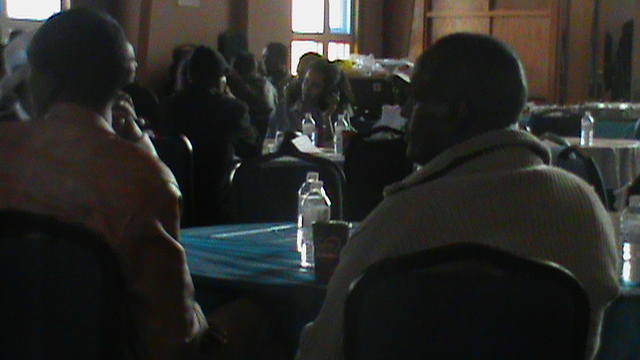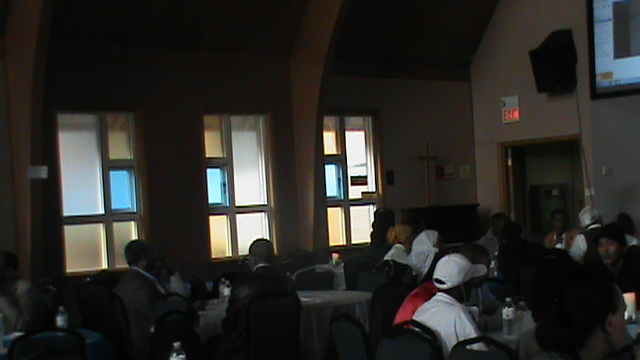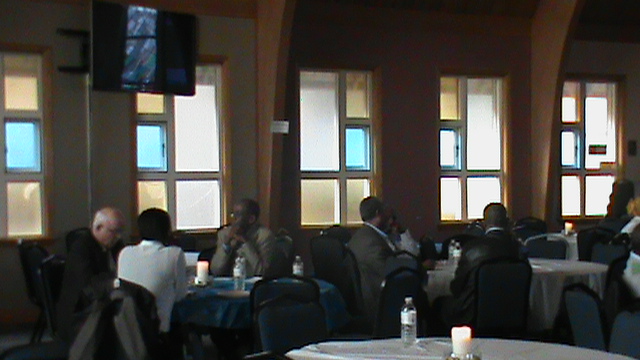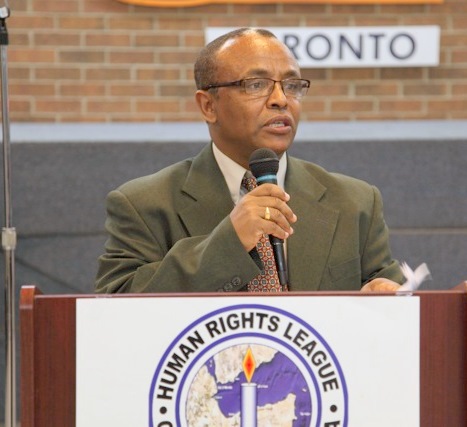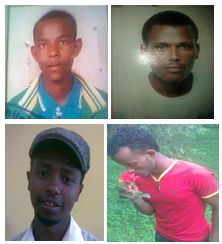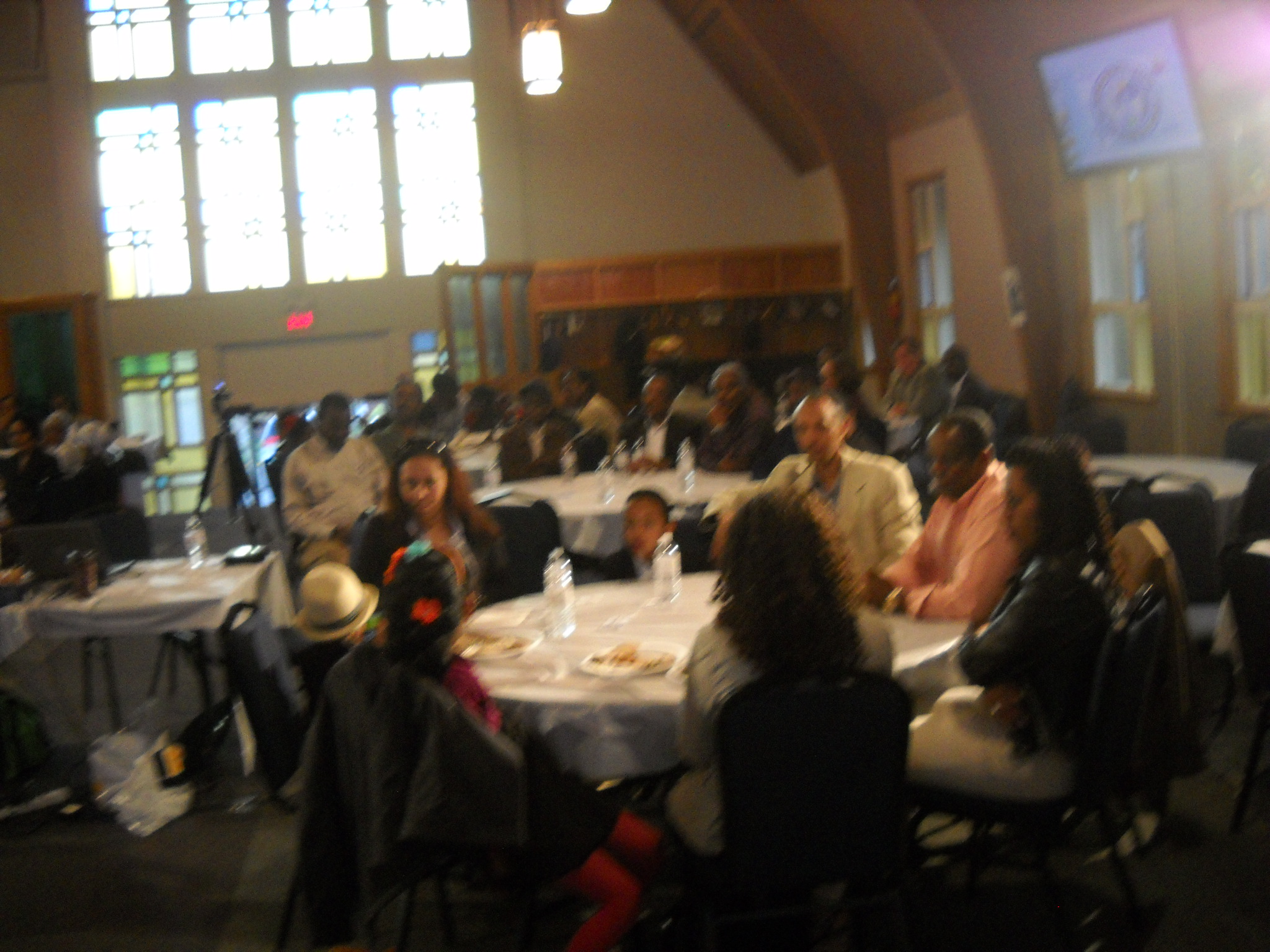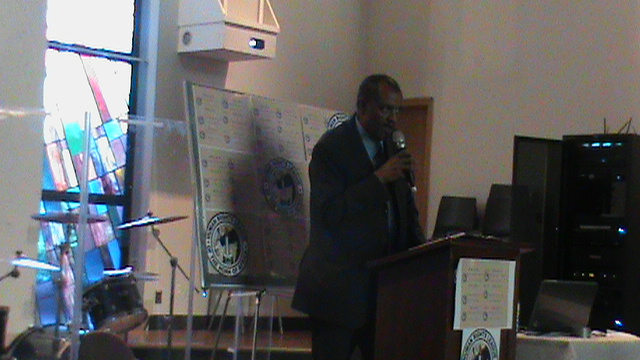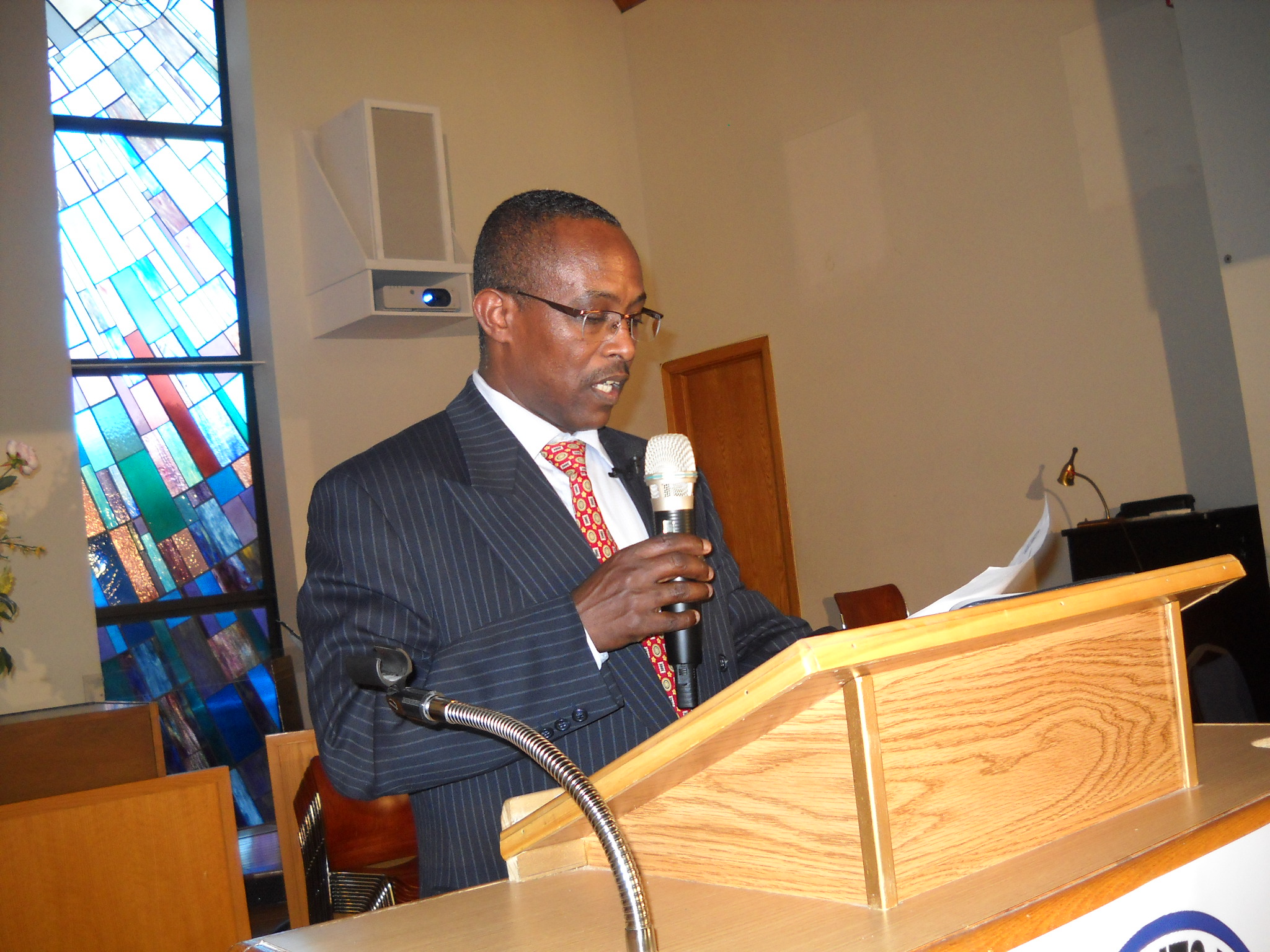HRLHA Press Release
October 15, 2017
The mass protests, which cover all of Oromia state and in which Oromos from all walks of life participated against injustices and the marginalization of the Oromo nation from their political and economic rights- protests that broke out in April 2014- continue in different phases.
The first Phase of the Oromo nation protest, which started in April 2014, was against the Addis Ababa Integrated Masterplan which was part of a land grab executed under the pretext of development by the regime. Oromo farmers were evicted from their lands without consultation and compensation. The protestors demanded that the government stop the land grabs and the evictions of Oromos from their ancestral lands under the slogan “Stop Oromo’s land Grab, Stop the killings, stop arresting Oromos.” The protest was cracked down on by the government force, Agazi force in which 81 Oromos- mostly University students- have been killed.
The second phase of the Oromo nation protest started in November 2015 in Ginchi town 80 km west of Addis Ababa. It was organized and led by an Oromo Youth Movement “Qeerroo Bilissumma” under the slogan “We need freedom, we need Democracy, Release Oromo Leaders from Prison, Down Down Wayane/TPLF” and continued for eight months until October 8, 2016 when the government declared a State of Emergency after the government military force had massacred over 700 Oromos at the Irrecha Festival on October 2, 2016. During this phase, over 2500 Oromos have been killed and tens of thousands have been jailed, and other thousands have been forcefully disappeared by the government security forces. The days after the mass massacre at the Irrecha Festival on October 2, 2016, up to the declaration of the state of Emergency on October 8, 2016, were a nightmare for the regime- angry protestors took violent action against government and government-linked properties and many companies have been attacked.
The government declared a state of Emergency on October 8, 2016, for six months to calm down the mass unrest in the country in general and in Oromia in particular. However, the regime used the declaration to implement more killings, abducting and jailing thousands of Oromos picked up from their homes. The situation in Oromia didn’t improve under a state of emergency, and the regime has extended it for four more months.
The third phase of the Oromo nation protest led by Oromo Youth Movement “Qeerroo Bilissummaa” reemerged on October 11, 2017 and continued- up until the time of this report- in different towns of Oromia and has presented a clear message to the government under the slogans ” Oromia is for the Oromos, We need government change, Down, Down Wayyane/TPLF”.
Among the protests in Oromia on October 11, 2017, were protests in Shahemene town, 250 km south-east of Addis Ababa , in west Arsi zone of the Oromia regional state, in Booke town, west Hararghe zone of the Oromia region in eastern Oromia, Ambo, 125 km west of Addis Abeba, Dodla east Arsi Zone and others. During the protests on October 11, 2017, at least 12 Oromos were killed by the Federal government, police and Oromia police in Shahemene and Booke towns respectively. Oromia government communication affairs bureau, Addisu Arega, has told the Voice of America (VOA) Afaan Oromo that at least six people (three in Shashamene and the other three in Booke) were killed, and more than 30 were wounded.
However, the HRLHA informants in Shashamene confirmed 9 Oromos including a 70- year old Oromo man had been killed, and more than 30 have been wounded by random gun shots coming from the federal police station in Sashimi town. The Oromo police were responsible for the Booke town, west Hararghe zone killing in which three Oromos, Girnoye, Mahanadi (student of grade 8) and Mukhtar (Taxi Driver) were killed by Oromia police, Ahmed Taji, on October 11, 2017, peaceful protest.
The HRLHA is very concerned about the long-lived mass protests in Oromia Regional State- over three years-during which the Federal government of Ethiopia and Oromia Regional state continued to halt dissent by force. Instead of providing a sustainable solution to Oromo’s long-standing grievances about freedom, justice, and equality, the federal government of Ethiopia has chosen to suppress Oromo’s demands by arming militias of all neighboring Regional States of Somali in the east, Benshangul in the west, Gambela in the west south and Afar in the North and wage a war across borders against Oromia.
For example, the Ethiopian Federal government sponsored Somali regional, state militias, the Liyu Police had attacked Oromos living near the border crossing into Oromia side in the Eastern Oromia districts of Gursum, East Hararge, and West south districts of Raytu, Saweena, Bale zone, Chamug Borana zone, Wachile and Moyale Gujji zones. Over 500 people have been killed in the past six months of continuous inventions. Now days the federal government of Ethiopia is arming the Oromia neighboring militias by distributing ammunitions from the center. The Federal security forces with convoys carrying arms headed for the neighboring Somali regional, state have been blocked by residents in Soda town, Boran Zone on October 12, 2017. The angry security force has opened fire on residents and killed four people, Ali Waqo Galgalo, Iyya Malicha, Adii Yabalo and Shu Ahmed, according to the VOA afaan Oromo reported on October 13, 2017. Earlier in the first week of October a truck heading for Benshangul regional, state was forced to turn back by Oromia police after they discovered the hidden ammunition in the truck.
The HRLHA urges the Ethiopian Government to change its policy of using excessive force to force the masses to surrender- a tactic that could lead the country into a full-fledged civil war.
The HRLHA also calls upon governments of the west and international governmental agencies, the UN, the EU, and the AU to pressure the Ethiopian government to recognize the Ethiopian people’s demands in general and those of the Oromo people, in particular, to solve the political chaos the country is currently facing before the crisis reaches an irreversible stage.
Copied To:
• UN Security Council
Office of the Ombudsperson
Room DC2 2206
United Nations
New York, NY 10017
United States of America
Tel: +1 212 963 2671
E-mail: ombudsperson@un.org
• UN Human Rights Council
OHCHR address:
Office of the United Nations High Commissioner for Human Rights (OHCHR)
Palais Wilson
52 rue des Pâquis
CH-1201 Geneva, Switzerland.
• Africa Union (AU)
African Union Headquarters
P.O. Box 3243 | Roosevelt Street (Old Airport Area) | W21K19 | Addis Ababa, Ethiopia
Tel: (251) 11 551 77 00 | Fax: (251) 11 551 78 44
Webmaster: webmaster@africa-union.org
•
African Commission on Human and Peoples’ Rights
31 Bijilo Annex Layout, Kombo North District
Western Region, P.O. Box 673 Banjul
The Gambia
Tel: (220) 441 05, 05, 441 05 06
• The US Department of State
WASHINGTON, D.C. HEADQUARTERS
(202) 895-3500
OFMInfo@state.gov
Office of Foreign Missions
2201 C Street NW
Room 2236
Washington, D.C. 20520
Customer Service Center
3507 International Place NW
Washington, D.C. 20522-3303
• UK Secretary of State for Foreign and Commonwealth Affairs
Parliamentary
House of Commons, London, SW1A 0AA
Tel: 020 7219 4055
Fax: 020 7219 5851
Email: hammondp@parliament.uk
DepartmentalStreet,
London, SW1A 2AH
Tel: 020 7008 1500
Email: fcocorrespondence@fco.gov.uk
• Minister of Foreign Affairs (Canada)
Write to:
Enquiries Service (BCI)
Global Affairs Canada
125 Sussex Drive
Ottawa, ON
K1A 0G2
Email: Enquiry Service – Online form
Canada
• Minister for Foreign Affairs (Sweden)
Her Excellency Margot Wallström
Switchboard: +46 8 405 10 00
Street address: Rosenbad 4
Postal address: SE 103 33 Stockhol
• Minister of Foreign Affairs (Norway)
His Excellency BørgeBrende
Ministry of Foreign Affairs
E-mail: post@mfa.no
Phone: + 47 23 95 00 00
Address: 7. juniplassen 1, N-0032 Oslo
